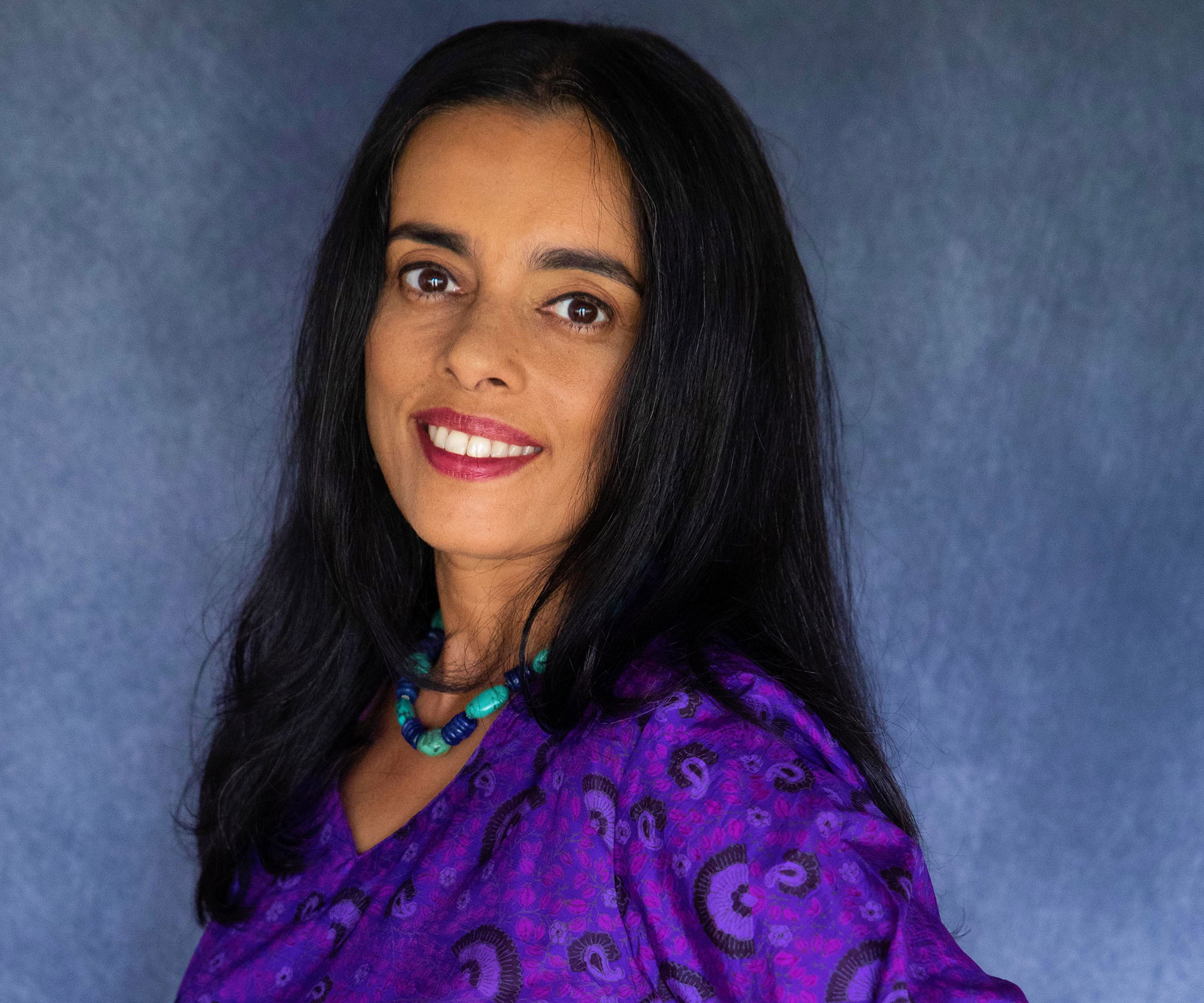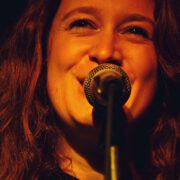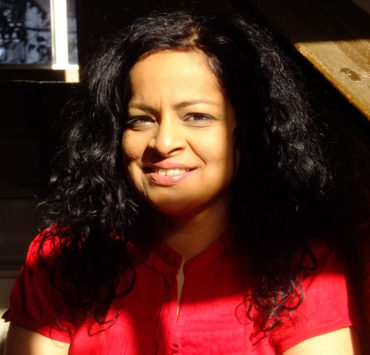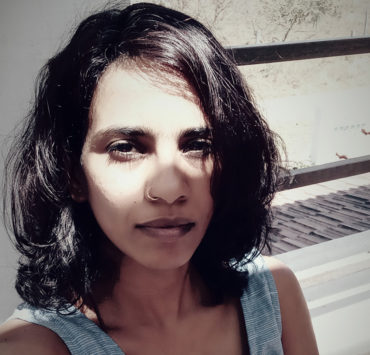Tejaswini Apte-Rahm’s debut novel, The Secret of More, is an ode to an India that has been relegated to the past. It is the picture of an India bustling with activity and insatiable hunger, and almost all of its characters hunger for more. This intensity of passion and ambition is further electrified due to the setting of the novel, 19th century Bombay. The sights, sounds and smells of the textile industry, the movie industry, and the chawls teeming with life inundate the pages of Apte-Rahm’s novel.
It is summer in Bombay; the year is 1899. This is where we meet Tatya, the protagonist of the novel, a 17-year-old boy with limitless dreams. The novel takes us through Tatya’s life as he navigates the blurring lines between his hard-earned practical returns in the textile distribution industry and his desire for more, a temptation that frequently contradicts his practicality. We witness Tatya’s changing family, his marriage to Radha, his children growing into young adults, his discovery of love, and his robust contribution to the silent film industry. This movement in Tatya’s life is parallel to India’s emergence from the dark days of being a colony to an independent country. At the beating heart of the novel is this silent negotiation between what we have and what we desire. In Apte-Rahm’s capable hands, this tension turns tender and the dance of desire becomes poetry.

The Secret of More is a work of historical fiction and its writer is someone who has meticulously excavated these truths from countless narratives and oral histories that she has been handed down. “All of these characters are true. They are consolidated and composed of real life experiences. Historians have fact. Authors have imagination,” she said, strong in her belief that historical fiction is materialized at the “realm of feasibility”, where fact and fiction conspire together to breathe life into forgotten things.
Read on for an exclusive interview with the author—
The novel uses sensory details very deftly to transport us back to colonial India. What do you think are the essentialising aspects of sights, sounds, and smells in storytelling? How did you weave these details into your creation of a vivid 1900s Mumbai?
Quite early on in the process of writing my novel, I started taking a cinematic view of my fictional world. I think I initially did this without being conscious of it. There was a desire to see my characters move through an immersive and detailed landscape of early 20th century Bombay as if I was watching the action on a giant cinemascope screen.
I usually visualise a scene in vivid detail, as if I am watching a film. And then I write down what I see. The layout of a room, and the placement of objects, furnishings and people in the room. The way the scene is lit up is important—is it sunlight streaming in through a window, or is it lamp-light? If the sunlight is streaming in, then is it through a lattice, or a gauzy curtain, or simply a block of sunshine blazing in unfettered? If the scene is lamp-lit, then where is the oil lamp placed? Why is it in that specific spot, and who has placed it there? Could I perhaps move that lamp so that it adds value to the narrative or the visual drama in the scene?
I also started placing myself within the scene as a close observer of what is going on. And when you are in a scene, you realise that all five senses are in play—sight, sound, smell, taste, and tactile sensations on your skin—and you have to pay attention to all of them. For example, the quality of the sunlight will depend on the time of day. And the time of day will determine the sounds that are coming in through the open window (the clacking sounds from a typing institute in the morning, or noisy school children going home in the afternoon). The time of day will also determine the sounds and smells in the house (the crisp sound of onions being sliced to prepare an afternoon snack, and the smell as they go into hot oil), and the smells floating in from outside (the late night smell of a raat-rani tree). And finally, the feel of the day on your skin (a prickly, sweaty afternoon, or a cooling evening).
While this is how I visualise a scene, it does not mean, of course, that each scene has to be described in terms of all five senses. That would be an unbearable drag. When writing a scene, you just need to choose the one or two details that imply all the other details, and make the scene come alive. But it’s crucial that I know all those other details; that I know much more about the scene than what I write down. That wider knowledge contributes towards creating a vivid sensory world on the page.
Your novel has centred the complex and rich culinary history that Mumbai has been a confluence of in its plot. It has uncountable descriptions for daily household items to luxurious and festive meals. How did your research lead you there? And why was food so important in your storytelling?
During my research, I realised that so much of the food I take for granted today, even within the confines of daily home food, would have been unknown or alien in a traditional Koknastha Brahmin context. The family in my novel, the Abhyankars, are from that very specific community of Brahmins. And at that time there was very little, if any, cross-pollination of food culture if you were an orthodox family. So I had to be very careful about what food they cook and eat in the novel. For example, something as ordinary as batatawada would have been unknown in a traditional kitchen.
One has to ask why there was no culinary cross-pollination, especially in a cosmopolitan, rapidly modernising city like Bombay. And then you realise it was not just the food, but the entire way of life that was rather insular, most especially for the womenfolk. The menfolk might mingle with a diversity of people through their working day, and come across various customs and behaviours. But women were not supposed to go out of the house unless there was a very specific reason like visiting the temple, or attending a haldi-kunku. There were no casual outings like going to spend time with friends. You were not supposed to eat anything unless it was cooked by a Brahmin. With such orthodoxy comes limited exposure. And it was the women with this kind of limited exposure who were running the kitchens. So it is no surprise then that the food coming out of those kitchens was absolutely traditional.
I took most of my cues from conversations I had with various family members, especially the older women who had first-hand memories of growing up in a very traditional household where the food cooked was exclusively Koknastha Brahmin fare. No outside food was tolerated in the house. In later years, if at all some bread was bought, it was not allowed into the kitchen, and had to be left on a table outside.
Food acquired huge importance when I wrote from the female characters’ point of view, because it was central to the rhythm of women’s lives. Preparing fresh food daily, or dry foodstuffs for storage, or other essentials like tooth-powder and hair cleansers—it is astonishing, seen with a modern lens, the extent to which things had to be made at home, whether it was grinding and cleaning salt, or making tooth-powder out of almond husk, charcoal and camphor. The preparation of these essential items, so often dependent on the seasons, was a part of the rhythm of those women’s lives in a very visceral way. For instance, before the onset of the monsoon you had to have a four-month stock of chilli powder ready because once the rains began there was no way to sun-dry the chillies. Various seasons and festivals were also defined by food in a way that does not necessarily happen today, when most things can be bought or prepared year-round.
Sometimes as a researcher you strike gold—and that is what happened when someone sent me two historic manuals for women—essentially go-to guides for housewives in the early 20th century, written in Marathi. One was written in 1914 and the other in 1934, and their scope is enormous. The instructions cover everything from daily meals to festive meals, to sweeping the courtyard, to cleaning the oil lamps, to heating up hot water for a bath, and so much more. These manuals helped enormously in building the world of my novel.
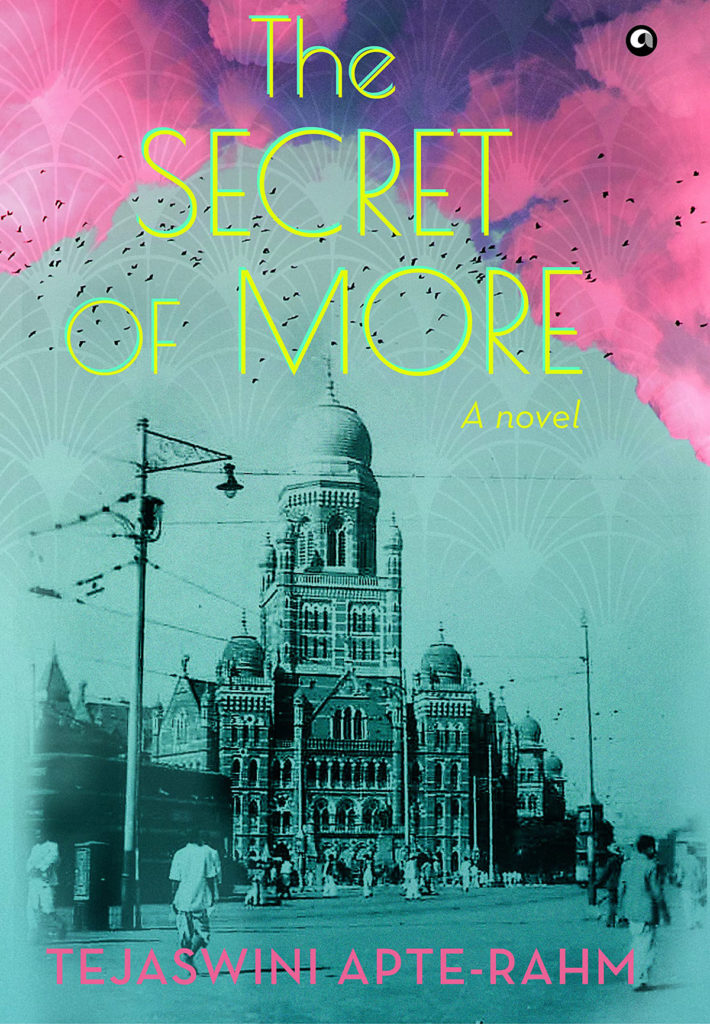
In your acknowledgements, you write that this novel is inspired by your research into the life of your great-grandfather. Tell us about how the story materialised from its conception to its final shape.
I was working on writing a biography of my great-grandfather. I did extensive historical research for it, because I wanted to understand his life within the social and business contexts of the time. The research included visiting libraries as well as doing hours of oral interviews with older family members. The more I uncovered about his life, the more fascinating it became. Having arrived in Bombay with not much in his pockets, he made his fortune in textiles as the selling agent for Kohinoor Mills, and then became a financier and producer of Dadasaheb Phalke’s films, and one of the founders of the Hindustan Film Company, and later opened a sugar factory. It also became increasingly clear to me that he had lived in an incredibly dynamic era of Bombay’s history.
That is where the inspiration for this novel comes from—I wanted to write a novel about a migrant in Bombay who finds success in the textile industry and the silent film industry, and how he and his family navigate their way through a city that is undergoing a rapid transition from the traditional to the modern.
However, the novel is entirely fictitious: my great-grandfather’s life and times were simply a leaping-off point for the novel. The characters, their motivations, their decisions and relationships were all elements that I imagined and which evolved during the course of writing the novel.
I started by writing the beginning and the end. I have no idea where the impetus to do this came from; it just happened. I knew how the novel should begin. I wanted to immediately establish the wider landscape of the city and the vastness of the sea, and within that I wanted to zoom into the specific situation that my character finds himself in—alone in a large mansion, the floor carpeted with ripe mangoes, having just lost his wife. These opening paragraphs became the prologue.
And shortly after that I wrote the end of the novel. As soon as I had written it, I knew this was exactly how it had to be—the pacing felt right, and I felt comfortable with the narrative voice, which I then adopted for the rest of the book.
Writing the end so early on provided me with a road map – I knew the direction in which the story needed to go, what the final destination was. Having said that, I was fully open to changing the end if needed. But luckily, like a homing pigeon, I made it back to where I’d started from!
“I started by writing the beginning and the end. I have no idea where the impetus to do this came from; it just happened.”
This being your debut novel, what were the most challenging and formative aspects of representing history in fiction that you have experienced embarking on this journey?
I found that there were two main challenges in representing history in fiction. You could call them potential traps to be avoided at all costs.
Firstly, as a writer you have to ensure that you don’t bring your own modern sensibilities into play, when writing from the viewpoint of your characters. Ideas of fairness, right and wrong, what was socially acceptable to say and do, ideas of love and what makes for a ‘good’ marriage, were different in that era. To a large extent, you have to set your own modern notions aside and not fall into the trap of putting your own contemporary views into the dialogues and thoughts of your fictional historical characters. You have to stay true to the history for authentic voices to emerge in your narrative.
For example, there is a scene in which Radha is planning a haldi-kunku (which is a women’s-only event) in their new apartment. Her husband, Tatya, suggests that she also invite the wives of two of his business associates from Mulji Jetha Market. To which she says, but they are not Brahmins like us, how can we have people of other castes enter our home? He responds by saying, I don’t want to force anything on you, but remember that I mix with non-Brahmins all day. It is the nature of business, and you see that no harm has come to us by my doing so. Finally, Radha hits upon the idea of having the haldi-kunku on the terrace, so that ‘people of other castes’ will not enter their home.
Though I personally find Radha’s views unacceptable, I had to write this scene with restraint. It would have been all too easy to show Tatya as being irritated at her views, or pushing her to accept his own views. And then the scene would have lost its authenticity. For Radha to accept other castes in her home would have been a very radical thing in that era, whereas her character is extremely traditional. Nor is Tatya a reformist or activist, to want to chide his wife or lecture her. And therefore all he does is make a mild suggestion that she change her ways. Finally, having the event on the terrace, so that she can invite the wives of his business associates, is a compromise on her part.
In fact, this is often how social change comes about within families and in wider society—not in one revolutionary moment, but in small incremental changes and compromises over the years.
Secondly, it can often be tempting to use well-known historical events as ‘markers’ within the novel, to refer to them in order to show your reader where you are at in the timeline of the country’s history. Not only is this a lazy style of writing, but it is jarring for the reader as well. I wanted historical events to come into the narrative only when it directly affected the lives of the characters. For example, I have referred to the Jalianwala Bagh massacre because it directly leads to the nationalist feeling that makes Tatya’s first film a hit. If I simply mention the massacre because I want to signal to the reader that it is the year 1919, this becomes a rupture in the narrative.
“This is often how social change comes about within families and in wider society—not in one revolutionary moment, but in small incremental changes and compromises over the years.”
In our own times too, we experience momentous national or world events mainly in the way they affect our daily lives, whether in the rising cost of living, or our personal freedoms, or the way we consume media. Our individual lives reflect what is going on in the world. Similarly, I wanted to focus on the day-to-day aspects of that era, where my characters’ lives suggest the sweep of history, rather than historical events suggesting what my characters’ lives are like at a given moment.
You have built Tatya to be a flawed character and his narrative arc is handled with terrific sensitivity. Even when we cannot forgive him for his missteps, we understand his drive and desire, and in the end, we sympathise with him. What made you choose to tell the story through the eyes of such a protagonist?
You may have noticed that there is no villain in my novel. Of course, lots of villainous characters do exist in real life, but most commonly when things go wrong it is not because of a true-blue villain, but because of the character flaws of people in our lives, or our own flaws. Such flaws lead people to make decisions which can sometimes make a bad situation worse—or alienate friends, or disrupt sincere communication, or make people behave in a selfish, insensitive manner. In this regard, a novel which inspired me was Bleak House by Charles Dickens. I was struck by how the true villain in that novel is the legal system that sucks people into its clutches and has the potential to destroy lives and relationships. Though Bleak House has a cast of deeply flawed characters, we can, to varying degrees, sympathise with them, or at least understand their motivations. Some are, of course, hateful, but they are not necessarily villains.
I only realised this at the end of Bleak House, and I was stunned at the ease with which Dickens has guided us through hundreds of pages and a raft of characters with all the ups and downs in their lives, without laying the blame at the feet of any one person. The only villain is circumstance and the legal system.
Similarly, I wanted to give a realistic structure to The Secret of More and people it with characters who you can engage with on their own terms, like Tatya, who you can comprehend and relate to, despite his flaws and missteps.
You delve deep into the history of textile mills and silent films, both are businesses that Tatya manages and writes his success story with. What made you choose these two trades as Tatya’s bedrock? Tell us about their dynamic role in shaping Mumbai.
The early 20th century was a period of great commercial and social dynamism in Bombay. Both the textile and film industries are central to the history and identity of the city. They have formed a commercial backbone for the city, and created the fabric of the Mumbai we see today. So it was fascinating to go back into those early years and imagine what the pioneers of these industries would have done.
In 1899, when my novel begins, the textile industry was already booming. It was Bombay’s most important industry, and it shaped the city’s fortunes. It was the only large-scale employer of labour in the city at the time. During the early 20th century, Bombay’s mills accounted for 50% of the spinning and weaving capacity of India. During the First World War there was a further boom in Indian textiles—fortunes were made because no cloth could come to India from British mills, since cloth production and ships were diverted towards the war effort. At this point, the mills that made cloth in India found their prices skyrocketing. It is on the wave of these booming decades that my character, Tatya, makes his mark at Mulji Jetha Market in Bombay, the largest wholesale textile market in Asia. The textile industry profoundly shaped the city in terms of its landscape, politics and cultural make-up. And it continues to shape the city today, in the guise of mills turned into malls.
It is in this context of commercial dynamism, and the availability of working capital, that Bombay’s silent film industry emerged. Needless to say, the film industry has been central to Bombay, not only in terms of its economic importance, but also in terms of its cultural significance. It has been key to creating a certain mythology of Bombay, as the place where dreams can come true. And it attracted a diversity of people from the creative arts to take up residence in Bombay.
This context leads to so many narrative possibilities, so many stories to tell about the vitality of the city and its people. That is why I focused on this era, and on the textile and film industries.
There are different representations of femininity exhibited by women belonging to very different classes and social backgrounds in your novel. All of them try to find stability and freedom in their very limited positions. Tell me about the process of writing these women and how you established these differences without pitting them against each other.
The differences in the women are mainly generational. The way I wrote the female characters was to make each of them a creature of her time.
There is Mai, a shaven-headed widow. Her daughter is Radha, who marries Tatya. And Radha’s daughter is Durga, born with a lame foot and arm. Each of them builds on the experiences and freedoms hard-won by the previous generation.
Mai submits to the restrictions and suffering imposed on her as a widow—there is little else she can do—but within those restrictions she doesn’t see why she should be neither seen nor heard simply because she is a widow. She insists that her young daughter Radha read the newspaper and practise mental arithmetic because she senses that Radha must arm herself with something more than what Mai had, something that might help her get ahead in the future. In an era when female illiteracy was common, Radha is later well-regarded among the other women in her chawl, who often come to her with letters or newspapers to read out.
Radha, in her turn, is consumed by fear that her daughter Durga will remain unmarried due to her disability, and is unrelenting in imparting to Durga the domestic knowledge she will need to find a good match and be the perfect housewife. But despite her misgivings about educating girls beyond a certain age, she lets Durga remain in school longer than is advisable in terms of her marital prospects.
While Mai and Radha are mostly content to find whatever freedoms they can within the constraints of tradition, it is Durga who finds herself navigating her way through an era of rapid modernisation, and who really itches to spread her wings and fly.
Each woman makes decisions that open up the world a little more for her daughter, for the next generation of women, with more freedoms and more knowledge than was previously accessible. The changes are small and incremental, but add up to something significant when seen across generations.
The importance of these incremental, generational changes was an essential and moving discovery for me as I wrote the novel, because it brought home to me that as women, we stand on the shoulders of the women who came before us, and their hard-won freedoms. These freedoms are not to be taken lightly, however much we might take them for granted today. It is not that long ago—very much within living memory—that girls were married off at the age of 12, and were withdrawn from education because it would ruin their marital prospects.
The fourth important female character is Kamal, the actress. She operates in an entirely different social sphere, having grown up within a theatre company. Uniquely, she has the freedoms that none of the women in the orthodox sphere have, and yet she is constrained by the social stigma attached to her profession. I enjoyed creating the character of Kamal because she is made up of a composite of real characters, and is based on the experience of women in the early film industry.
I want to delve into the dynamic between Radha and Durga. While Radha is content with the ritualisation of her household chores, Durga, like Tatya, hungers for more. Explain to us the approaches that you took into building this complicated dynamic between the two.
The one thing that defines Radha’s relationship with her daughter is a fierce love, coupled with a terrible fear that her daughter will remain unmarried due to her disability, and remain in a sort of twilight zone for the rest of her life.
Radha is introduced to a whole new side of Bombay when, as the family fortunes improve, they move from their Brahmin chawl to a cosmopolitan apartment block in 1917. She is amazed to see that there is a Chinese dentist on the first floor of the building, and is astonished that her neighbour, the footloose Mrs. Kanhere, gaily goes off on picnics with her family, invites British women home for tea, and regularly participates in a sewing circle. Radha marvels at the busy, alien energy of the city which has escaped her notice before, but she is rather alarmed at all this newness and retreats back to her family.
“As women, we stand on the shoulders of the women who came before us, and their hard-won freedoms. These freedoms are not to be taken lightly, however much we might take them for granted today. It is not that long ago—very much within living memory—that girls were married off at the age of 12, and were withdrawn from education because it would ruin their marital prospects.”
When Durga, on the other hand, is unexpectedly drawn into the world of the beautiful and sophisticated princess Geetanjali Raje in 1930, she does not retreat from this alien world, but is fascinated by the possibilities opened up by women’s education and travel. She is a creature of her time and place—she has not been transplanted into the city from a village, like her mother was, but has been born and brought up in Bombay. She desperately wants to continue her education and learn English, while her mother eventually insists she be withdrawn from school.
It is these differences between mother and daughter that play off each other in creating conflicts and compromises, pushing the plot forward and developing their character arcs through the narrative. More than anything else, their relationship is a loving and trusting one. This was an important factor for me in developing their parallel tracks: conflict within a family need not automatically mean a lack of love or trust.
Tatya and Sharad are very different from each other. While Tatya’s desires are materialistic, Sharad’s desires have more to do with his own fulfillment. Ultimately, both of them fail to voice their desires in different aspects of their lives. What were your approaches going into crafting their desires and making them unable to fulfill them?
A key element in the relationship between Tatya and Sharad is the lack of open and honest communication. I have seen this often in many families, where men (unlike women) often don’t speak openly to each other. They don’t have ‘heart-to-heart’ conversations with other men, the way they do with the women in their lives, whether it is daughters, aunts, or sisters. It is usually all-important to respect the patriarch of the family, which, in practice, means that a son will hesitate to express dissent, or tell his father what he really feels or desires. If it is common even now, you can imagine what it must have been like a hundred years ago when the rules of behaviour were iron-clad.
So that was my primary approach in crafting their relationship. Tatya’s disappointment with Sharad stems from his lack of understanding of what his son really wants, while Sharad has to keep his own ambitions cloaked under a veneer of politeness and respect. Again, there is no lack of love between them, but, as Tatya says, there is a missing link in the bridge between them, a gap which is always just a little too wide to step over.
“Conflict within a family need not automatically mean a lack of love or trust.”
I don’t necessarily agree with the view that Tatya’s desires are materialistic while Sharad’s are more to do with his own fulfillment. Both men, in the end, want to fulfil the desires of their souls. Tatya feels most fulfilled when making a success of his businesses, he feels satisfied only when he is, as he says, kicking footballs in several directions all at once, and then running after them with all his might. He has the drive and the ambition to do this, gaining unimaginable wealth along the way. Sharad, on the other hand, feels most fulfilled when he excels at sports. He enthusiastically talks to his mother about his college cricket tournaments, and also tells her that tennis is a sport that fills him with joy. These are things he would never dare to tell his father, and nor is he allowed the space to pursue those dreams. Both men want more, but their definition of ‘more’ is different.
What projects are you planning or currently working on?
I would like to work on fiction set in contemporary times, which does not require too much research. The research that went into The Secret of More was enormous, not to mention the continual cross-referencing and fact-checking in the course of writing and editing it. So I’d like to take a break from that kind of intensive research process. Having said that, I am a researcher at heart, so it wouldn’t surprise me in the least if I were to jump straight back into research for my next book. I’d also like to write another book for the Kalpavriksh Environment Action Group, an NGO which has published a wonderful list of children’s educational books, many of which have been shortlisted or won awards. The Poop Book!, which I co-wrote in 2018 with Sujatha Padmanabhan, has had a tremendous response from children, parents and teachers. So it would be great to once again contribute to Kalpavriksh’s education programme with another book.




